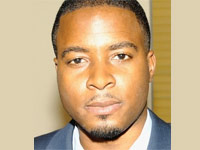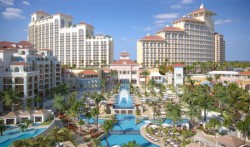 The Princess Margaret Hospital is supposed to be the flagship institution of healthcare in the Bahamas, yet it exemplifies everything that is wrong with the decision-making for people in the Bahamas and with those making the decisions.
The Princess Margaret Hospital is supposed to be the flagship institution of healthcare in the Bahamas, yet it exemplifies everything that is wrong with the decision-making for people in the Bahamas and with those making the decisions.
If anyone wants to construe this as a condemnation of the current administration, they should disabuse themselves of that notion since this is a problem of a lack of political resolve that has stretched decades.
Astoundingly, the disconnect between grandiose and splendiferous hotels, casinos and business establishments and the decrepit, rundown hospital speaks volumes about how little our governments honestly seem to care about people.
In the emergency department at PMH, people are stacked liked sardines three or four deep, using urinals with no privacy. The dehumanisation that results as people wait for hours and hours (and even days) to be seen, assessed and admitted is perennial, ongoing and a seemingly unsolvable problem. Seemingly, the solution – in the minds of our governmental leaders – has been to build more space in the emergency room area to store more bodies and to store more people whilst all the attitudes remain the same.
The co-existence of private and public care in the same country are yards apart; indeed, within the same institution, it speaks to institutionalised segregation. No matter how it’s sliced, separate is never equal. The public bathrooms in the hospital are dirty; the bathrooms on wards are unkempt; and, while there is care being provided, it is difficult to appreciate the quality of that care in a general environment that conjures up a feeling of squalour.
There are people waiting in lines for X-rays, lab tests, surgery, clinics, delivery of babies, to use bathrooms and in emergency room queues at the PMH. Further, the parking is inadequate and suggests that we have not adjusted the care delivered at PMH to the demands of 2015. When prisoners or criminals enter the emergency room or evade custody, there is pandemonium. Why is there no lock up unit at PMH? Criminals in shackles lie side-by-side with innocent civilians.
The experience of elderly Family Island patients, who must interact with the clinics and services at PMH, continues to leaves much to be desired: the hospital remains a less than welcoming place for them. The front entrance of the hospital is not disability friendly; indeed, many of the areas in the legacy units of the hospital are yet to be updated for access by disabled patients.
The clinics at PMH continue to function on a first-come, first-served basis. Why would this continue in 2015? Why isn’t there an appointment system where patients have an appointment to see a particular doctor at a particular time, as opposed to people have to plan to spend the entire day?
PMH ought to not only be the flagship institution of the Public Hospitals Authority but also the pre-eminent healthcare facility in the Bahamas; however, it is severely lagging behind because of its infrastructural, funding and management inadequacies which preclude it from achieving that designation.
As the largest healthcare institution in the country, PMH should be the site of basic and clinical research. It should be a regional leader in resident and student education and it should not only serve to provide the basis of national self-sufficiency in all clinical arenas but also provide training for the rest of the region. This has not been done and cannot be done because of the myopic view of PMH’s current mandate and its current role.
If this view of what could be the gem of our scientific and clinical endeavours was to be appropriately outfitted, the leadership of the Bahamas could be seen in more areas than athletics and culture. Alas, the institution limps along and is barely able to show glimpses of its potential.
There are large numbers of medical students who now train at PMH. Their training and exposure could be dramatically altered if we bought into the vision of PMH as a real training institution as opposed to merely a service facility. Frankly, such a paradigm shift would eliminate the standard of lifetime employment, instead replacing it with a model of continuous rotation and replacement of staff with young, bright and eager minds being cross-fertilised in an environment of academic and clinical enquiry and excellence.
Yesterday’s budget presentation on National Health Insurance (NHI) touched the tip of the iceberg of the issue. We have to rethink, and indeed discard, the current view of healthcare and PMH and replace it with a much more progressive and ambitious view that serves not only the clinical demands of a changing time but forms an integral part of the transition to university status at the College of the Bahamas and other academic successes.
So, the dirty bathrooms are metaphoric of the care and the environment that exists in PMH. Wouldn’t it be great if the overall ambiance of the bathrooms were elevated as the institution itself improves? In order to achieve the shared vision of universal healthcare and improvements in healthcare indices, there will have to be systemic, steady investment – as much as our budget and our expertise would allow.
Now that the Critical Care Block has been completed, the government should immediately plan and fund a new emergency department, a new maternal/child health unit, an on-site residence for house staff and full-time consultants to be available in the institution 24/7 and, most importantly, the public/private paradigm has to be destroyed so that the level and quality of care received by patients is uniform.
People will use unkempt bathrooms but would prefer not to. Similarly, if they have no choice, they will use the healthcare facility that is less than they deserve.
Healthcare reform, by its truest definition and by example, will have to start at the flagship institution. The manifestation of that reform will be a PMH of international renown.



